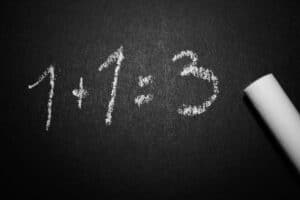Today, competition in the retail world is greater than ever. The current scenario is defined by how good is your pricing strategy and the struggle for competitive advantage. Online stores observe each other and continually compare their prices. For that reason, competitive pricing tools have become critical to build effective pricing strategies among today’s e-commerce businesses.
However, a purely reactive pricing strategy without an analytical basis may not have the expected result in your conversions. It is often perceived that in order to gain more sales you have to be the cheapest at all costs, although this is not entirely true.
On the one hand, it is evident that being the most expensive store for a product, there is a greater probability of losing sales compared to cheaper competitors. On the other hand, being the cheapest store based on reactive reductions, without any type of analysis or observation to support them, puts profitability at risk.
The secret lies in strategically changing prices, with the right information to support your pricing decisions. At this point, it is worth noting that in cases where a software for competitive intelligence comparison is already used, it is important to check whether it collects prices directly from the monitored websites or whether it does so from Google Shopping. If the tool you are using only tracks prices in Google Shopping you are losing sight of the rest of your competitors’ catalog. If, on the other hand, the competitive pricing tool of your choice follows the entire catalog of your rivals, you will always have the top-selling items controlled in Google Shopping, and at the same time, you will have the option of evaluating the rest of their catalog and detecting opportunities for products in the long-tail.
What elements should you take into account when monitoring your competitions pricing strategy?
First of all, you should have a good overview of your rivals’ price history, as this can help you detect patterns and recurring pricing strategies.
If you detect discounts or other recurring promotions throughout its history, you can anticipate and redefine your way of proceeding and defining your own strategy.
Stock can also give you a great competitive advantage. This happens if you have products in your catalog that are not available in your competitors’. This situation would lead to an optimization of margins, as the sense of immediacy or urgency of the buyer favors you if you have the product they want to purchase.
While price history and stock function as objective elements of your daily competitor analysis, there are also essential KPIs to determine the health status and success of your strategy. In fact, they could also be understood as levers to activate your profitability or as a signal that your pricing needs an improvement. Such metrics are known as Price Index or PI, margins and conversions.
In short, the price index is an essential indicator for assessing the level of competitiveness against rival stores. It is a metric that allows you to determine, at a glance, whether a specific product in the catalog is at the same level, above or below the price of rivals.
On the other hand, the set price based on competition should never jeopardise the profits of your business. Sometimes, it is enough to match the competition or to lower prices in a very measured way, by one cent for example. Similarly, there is also the possibility of trying to negotiate better terms with suppliers.
If you have a good price index, your margins are not at risk and the number of conversions has been increasing, you can be sure that your pricing strategy has worked optimally. If your PI level, on the other hand, is low and conversions have decreased, try to improve your competitiveness in the products that need it, without ever leaving your margins aside.
All these points are intended to serve as a reflection on how changes in pricing impact on the positioning of your e-commerce business and its growth in sales. Likewise, you can also try to include the indicators we have discussed among the main KPIs of your online store, as they will help you better evaluate the performance of the latter.







